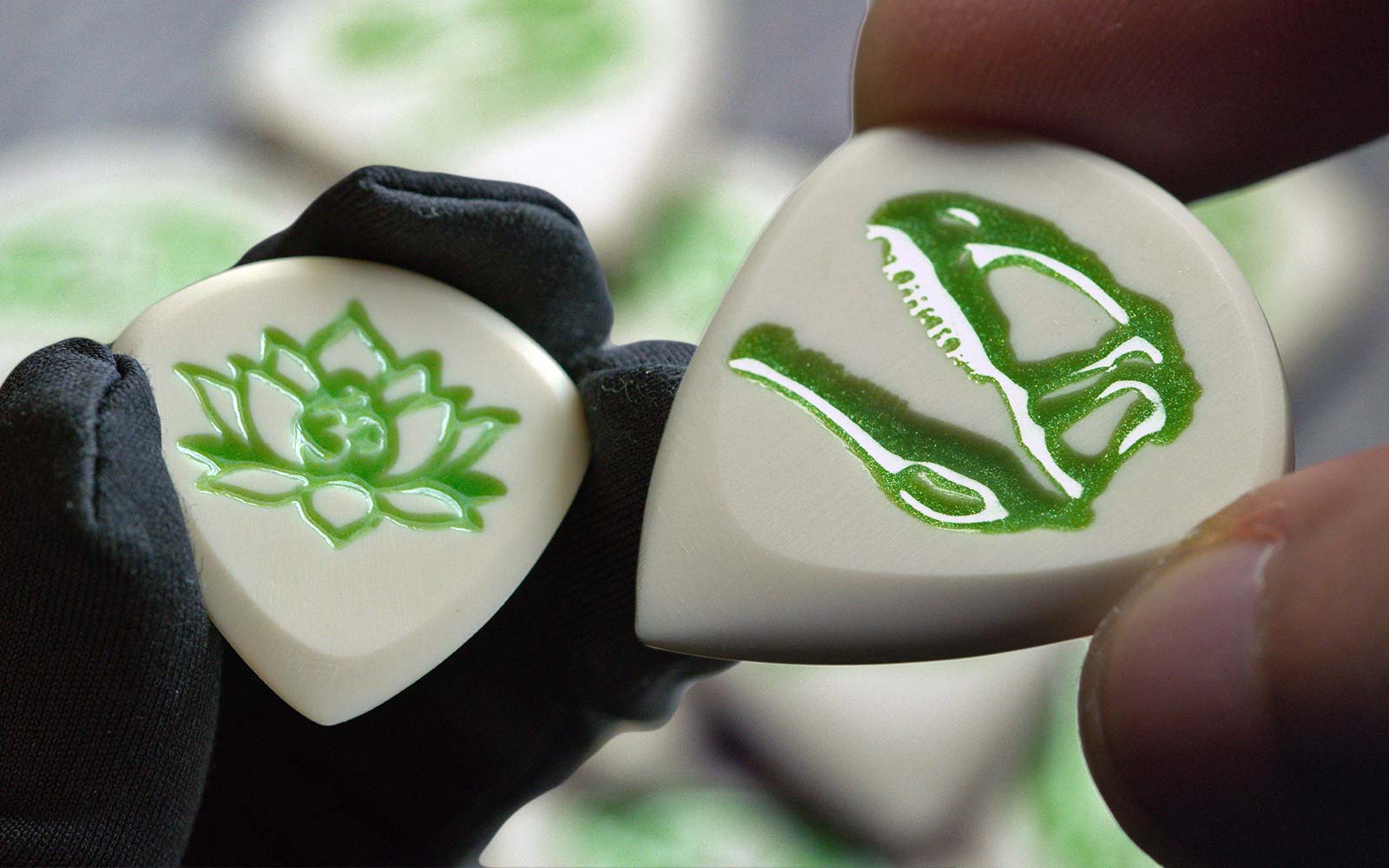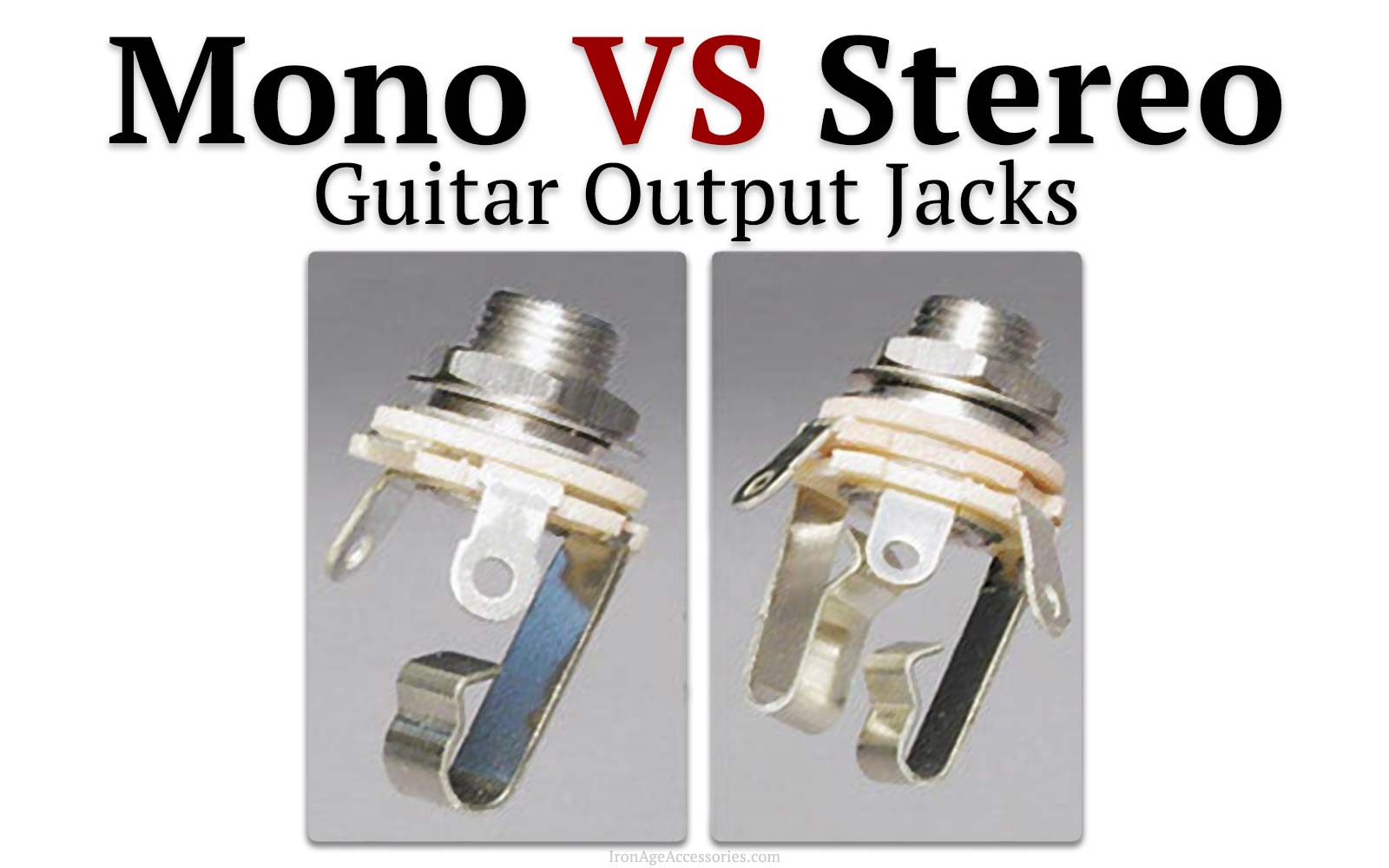What is a Fret Wrap, String Muter, or String Dampener?
by Alex Rodea March 05, 2025
A fret wrap is a simple yet ingenious guitar accessory that has gained popularity among guitarists and bassists. It is designed to control and dampen string noise, allowing players to achieve a more controlled and professional sound.
It’s essentially a band or strap, usually made of fabric or elastic material, that is placed around the neck of a guitar or bass, just behind the frets. It helps to minimize unwanted vibrations and sympathetic ringing, resulting in a cleaner and more focused sound.
Controlling string noise is of paramount importance in guitar and bass playing, as unused strings can vibrate sympathetically and generate unwanted noise.
Fret wraps are a practical and effective solution to tackle string noise issues. By applying a fret wrap correctly, you can significantly reduce unwanted vibrations, allowing your notes to ring out clearly and articulately. Below we’ll cover some related topics & answer some commonly asked questions.
Key Takeaways:
- Fret wraps help reduce string noise and sympathetic vibrations, resulting in a cleaner, more controlled sound.
- They enhance note clarity, making intricate passages and fast licks sound more precise and articulate.
- Fret wraps are versatile, effective across different genres, and adaptable to various playing techniques.
- They are easy to use, adjustable, and have minimal impact on the guitar's overall tone.
- Fret wraps are particularly useful for extended-range guitars and basses, controlling extra string vibrations.

Benefits of String Dampening
Reduction of String Noise:
The primary advantage of using a fret wrap is that it effectively reduces string noise. The unused strings can vibrate sympathetically and produce unwanted noise when performing techniques such as tapping, slapping, or two-hand tapping.
Something like a fret wrap helps to dampen these vibrations, resulting in a more controlled and cleaner sound. It allows your intended notes to be heard without being overshadowed by unnecessary string noise.
Enhanced Note Clarity:
A fret wrap improves note clarity by reducing string noise. If there is too much string noise when playing intricate passages or fast licks, the individual notes can blend together.
You can achieve a more distinct separation between notes with a dampening device, allowing your playing to sound more precise and articulate.
Improved Technique Control:
Fret wraps give you more control over string damping playing techniques. When performing palm muting, for example, the wrap helps to keep the muted strings firmly in place, resulting in a tighter and more defined sound.
Similarly, when using artificial harmonics or fingerstyle techniques, a fret wrap can help to eliminate unwanted string vibrations and ensure that the desired notes ring out clearly.
Versatile Application:
These devices are adaptable instruments that can be used in a variety of musical genres and playing styles. Whether you play rock, metal, funk, or fusion, a fret wrap can help you control string noise in a variety of techniques and musical contexts.
It provides a unified solution that can be applied to multiple guitars or basses.
Easy to Use and Adjust:
For the most part, these are simple to use accessories. They are typically light, adjustable, and simple to put on and take off. Many models have adjustable straps or Velcro closures, allowing you to adjust the tension to your liking.
This adjustability ensures a secure fit while not affecting intonation or playability.
Minimal Impact on Tone:
A string dampener, such as a fret wrap, typically has minimal impact on guitar tone. It is designed to dampen unwanted string vibrations and sympathetic ringing behind the fretted notes while leaving the open strings and played notes unaffected.
When properly applied, a dampener allows the natural tone of the instrument to remain largely unchanged, preserving the overall sound quality and character of the guitar.
Related: How many guitar strings traditional vs ERGs
Fret Wraps, String Muters & String Dampeners
Fret Wrap
A fret wrap is a commonly used term for a device that wraps around the neck of a guitar or bass, just behind the frets, to dampen or mute the strings slightly. It ‘s typically a band or strap made of fabric or elastic material with a soft cushion that presses onto the strings. Fret wraps are adjustable, easy to use, and widely available in different sizes & designs.
In addition to their practical benefits, fret wraps have become popular among session musicians and recording artists for achieving cleaner takes during studio sessions. They are particularly useful for extended-range guitars and basses, where sympathetic vibrations from extra strings can create unwanted noise.
Many professional players consider fret wraps an essential tool for technical playing styles, such as progressive metal, math rock, and jazz fusion, where precision and clarity are critical.
String Muter
The term "string muter" can refer to various devices used to mute or dampen unwanted string noise. Primarily though, we mean devices that can clip onto the strings themselves which are especially popular with bass guitars.
For example, the Gruv “Fump” which mimics palm muting that allows for a staccato effect.
String Dampener
Finally, a string dampener device can refer to any accessory such as foam or hook/loop strips installed right before or after the guitar nut. These are another great way to minimize unwanted overtones & string noise.
Related: What is fret sprout?
When to Use a Fret Wrap (or any String Dampening)
A fret wrap can be a game-changer in your playing, especially when you’re trying to control string noise. Here are some key situations where using one can help you sound cleaner and more professional.
Tapping & Sweep Picking: Cut Out Unwanted Noise in Fast Passages
If you’re into tapping, sweep picking, or legato runs, you’ve probably dealt with messy string noise. A fret wrap mutes those pesky open strings, so your notes ring out clean and sharp.
Example: Ever tried nailing Eruption by Van Halen? A fret wrap helps you keep those lightning-fast taps clear without extra buzzing or overtones.
Recording Sessions: Get Cleaner Takes Without Extra Edits
In the studio, every little sound gets captured—good and bad. A fret wrap cuts down on unwanted string vibrations, so your recordings sound tight and polished from the start.
Example: Session guitarists often use fret wraps when tracking metal or prog riffs to keep their takes crisp, saving time in the editing room.
Extended-Range Guitars & Basses: Tame Extra Strings
Got a 7, 8, or 9-string guitar? Or maybe a 5 or 6-string bass? You know how those extra strings can cause unwanted rumble. A fret wrap helps keep things clean by muting strings you aren’t playing.
Example: Watch Tosin Abasi of Animals as Leaders—he uses fret wraps during his insane tapping runs to keep everything tight and articulate.
DIY Options To Dampen Your Strings
Hair Tie
If you don’t want to spend the money on purchasing a dedicated product such as a fret wrap, you can still experience the benefits. Getting a hold of a hair tie (the thicker the better), you can simply wrap it around the stings near the guitar nut.
Bandana
Using a bandana as a makeshift string dampener can also be a cost-effective solution if you don't have access to a specialized fret wrap or string muter. Simply tie it around the guitar neck as you would with a fret wrap & test out its effectiveness.
Foam or Hook & Loop Tape
Finally, you can use a piece of foam, cut it to size, and place it under the strings behind the nut. Velcro can also come in handy by removing the rough “hook” side & keeping the soft “loop” side, you can also cut it to size & slide it under the first fret next to the guitar nut.
Frequently Asked Questions
Is a fret wrap a capo?
No, a fret wrap is not a capo. A fret wrap is used to dampen or mute the strings behind the frets, reducing unwanted string noise, while a capo is used to raise the pitch of the strings by clamping them down across a specific fret.
Do fret wraps really work?
Yes, fret wraps effectively reduce string noise and sympathetic vibrations, improving note clarity and controlling unwanted noise during techniques like tapping, slapping, and two-hand tapping, widely adopted by professional musicians.
Can you use a scrunchie as a fret wrap?
Yes, a scrunchie can serve as a makeshift fret wrap, dampening strings behind frets and reducing noise. Place it around the guitar or bass neck, ensuring it covers the strings without interfering with open or fretted notes. Adjust tightness as needed for desired dampening effect.
Can you play open strings with a fret wrap?
Yes, when used properly, fret wrap should still allow open strings to ring freely while reducing unwanted vibrations. This allows you to play open strings as well as fretted notes with less string noise.
Also in Iron Age || General Blog

The 3 Best Engraved Guitar Picks to Personalize Your Playing Experience
by Alex Rodea March 20, 2025
Engraved guitar picks add both style and function, offering extra grip and a personal touch with custom initials, logos, or messages. Whether you're looking for a unique gift or a pick that stands out, check out our top choices and grab your first engraving for free with code...

Guitar Jack Not Working? Here's A Few Easy Steps To Fix Crackles & Pops
by Alex Rodea March 19, 2025

Mono vs Stereo Jacks: Key Differences & How to Wire Them
by Alex Rodea March 06, 2025

The Best Acoustic Guitar Picks: Tips & Considerations For Newbies
by Alex Rodea March 06, 2025

The Best Guitar Picks For Bass: A Guide To Help You Choose
by Alex Rodea March 05, 2025

Guitar String Names & How To Memorize Them
by Alex Rodea March 05, 2025
+Iron Age Blogs
For the latest news & announcements, check out our News & Updates Blog
For tips, tricks, & other informative articles, check out our General Guitar Blog
Become a newsletter subscriber to get the latest info on new blog articles, receive exclusive promo codes, and be notified of upcoming giveaways!
+Recent Articles
-
The 3 Best Engraved Guitar Picks to Personalize Your Playing Experience
March 20, 2025
-
Guitar Jack Not Working? Here's A Few Easy Steps To Fix Crackles & Pops
March 19, 2025
-
Mono vs Stereo Jacks: Key Differences & How to Wire Them
March 06, 2025
-
The Best Acoustic Guitar Picks: Tips & Considerations For Newbies
March 06, 2025
-
The Best Guitar Picks For Bass: A Guide To Help You Choose
March 05, 2025
-
What is a Fret Wrap, String Muter, or String Dampener?
March 05, 2025
-
Guitar String Names & How To Memorize Them
March 05, 2025
-
How To Make Wooden Guitar Picks: Ebony Spearhead
March 05, 2025
-
Top 3 Best Guitar Picks For Grip: Iron Age Edition
March 05, 2025
-
Are Guitar Picks Necessary? Exploring the Pros, Cons, and Playing Styles
March 05, 2025
+Affiliate Notice
Iron Age is a participant in the Amazon Services LLC Associates Program, an affiliate advertising program designed to provide a way for websites to earn advertising revenues by advertising and linking to Amazon.com
Iron Age Guitar Accessories
226 Douglas Way St
San Antonio, TX 78210
USA
⚔️
“Quality is never an accident. It is always the result of high intention, sincere effort, intelligent direction and skillful execution. It represents the wise choice of many alternatives.”
~William A. Foster (MOH Recipient, 1945)
Sign up for the Iron Age newsletter to Save 15% on your 1st order, plus get exclusive offers, product updates, and early access to giveaways!
© 2025 Iron Age Guitar Accessories.
Est 2015.


Alex Rodea
Author
Founder of Iron Age, my guitar journey began in 2006, fueling a passion for crafting premium guitar accessories that embody timeless style & innovative expression. Through my Stay Tuned Guitar site I also share tips & info for new guitarists, offering everything from beginner tutorials to DIY tips & general music knowledge.